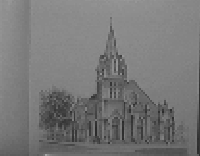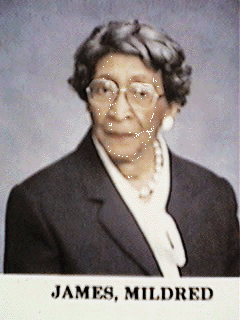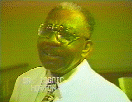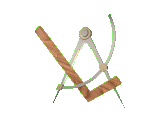
First State House in Raleigh Scene of Organization of First Baptist Church 1812

On March 8, 1812, while the War of 1812 raged,the bell from the North Carolina House rang. Results of its peal continue through today. Twenty-three souls arrived at the State House for a most historic meeting. Fourteen were slaves of African descent and nine were classified as Caucasian,the owners of the slaves, Elders Robert Daniel and Zodac Bell preached and then led the group into the organization of Raleigh Baptist Church, which marked the founding of what we now know as First Baptist Church. All of the original group were admitted by letter from the Cool Springs Baptist Church, which was located approximately ten miles south of Raleigh.
Elder Robert Daniel became the Pastor of Raleigh Baptist Church and remained with the church until 1815. He would return to the new church in 1822 and serve as pastor again until 1826. The small membership continued to worship and plan ahead. The site of the original church home is at or near where the Salvation Army facility now stands. After Elder Daniel resigned, three pastors followed. The new church home was at Oak Tree, in what is know as Moore Square, but which is still known by Raleigh natives as Baptist Grove.
In 1823, a slave named "Joseph" was appointed to officiate for the members of his race at the Lord's Supper. Also, in the same year, the church's leadership granted permission for any Black Minister of like faith "possessing proper credentials"(qualified) to preach in the church when it was not being used by the white members.
By 1826, the church's membership had increased to 224;157 African-Americian(70%) TO 67 whites(30%). Still, the large population of African-Americans had no voice. Joseph continued to serve them communion. Pastors who served the "integrated" church after Rev. Daniel's departure were: Rev. P. W. Dowd(1827-1832);Rev. William Hill Jordan(1832-1839);Rev. Amos J. Battle(1839-1844);Rev. Louis Depre(1844);Rev.J.J. Finch(1844-1848);Rev. T. W. Tobey(1848-1856); and Rev Thomas E. Shinner(1856-1868).
During Rev. Battle's tenure at Raleigh Baptist Church, the congregation secured a deed for a lot at the corner of Wilmington and Morgan Streets, where a church building was erected. It was a great sacrifice to the membership to build this structure on Wilmington Street. The cost was approximately $6,000.00. Part of the congregation was not pleased about moving and chose to remain at the Moore Square location. It is believed that those who remained formed Tabernacle Baptist Church. The majority of the members moved to the new site at Wilmington and Morgan Streets. The church continued to grow as New Baptist Church.
It was during Rev. Skinner's term that a slave named Jim Atkins convinced his owner to sell the site at the corner of Edenton and Salisbury Streets to New Baptist Church. The new church building was dedicated in November 1858, and the membership moved into the church on September 11,1859.
After the Civil War, when African-American members still had no voice in the church, a debate arose around how best the work of the church could be done if there were separate churches or whether the First Church should become two churches rather than one. At a church conference on June 5,1868, Henry Jett and a delegation of Africian-Americans asked for letters of dismissal. They wanted a separate church. The request was granted.
Thus the bi-racial era of First Church ended, and the existence of First Baptist Church,Colored, began.
More than a year before that momentous church conference, the African-American First Baptist Church members had bought property for $612.00. This property, which was the first home for the new congregation, faced North Salisbury Street(Salisbury extension) between North and Johnson Streets. The African-Americans had owned the property for 40 years when they sold it on January 17,1907 for $2,500.00.
The first pastor of the "Colored" Church was a Philadelphia native, Rev. William Warwick. During the Warwick years, First Baptist Church, Colored managed a school. The Miles Schools, presumably named to honor Union Gen. Nelson A. Miles, in charge of the local Freedmen's Bureau, had opened May 25,1868 in a building constructed on North Salisbury street between North and Johnson Streets by the Freedmen's Bureau. When the new congregation of First Baptist Church, Colored purchased the lot, they continued the school there for a few years. Rev. Warrick and Miss Louisa Warrick were teachers at this school. Pupils in the Miles School were absorbed into the public schools in the 1870's.

Rev. J. J. Worlds
Rev. Warwick served as shepherd of the flock from 1867 until 1874, when Rev. J.J. Worlds, a Harnett County native who was reared in Michigan, assumed the pastorate. Rev. Worlds was known throughout Raleigh because he was both the second and fourth pastor of First Baptist Church, Colored. Other early pastors of First Baptist Church, Colored were:

Rev. William Greene
Rev, William A. Greene(1880-1886);Rev. Worlds (1886-1902);Rev. J. W. Kirby(1902);Rev. W. T. Coleman(1904-1912);and Rev. Dr. C. E. Askew(1912-1921).Rev. Worlds established a long tradition of community involvement among pastors of First Baptist Church. During this time period in Raleigh, vice flourished openly. Rev. Worlds was a strong temperance advocate. Because he was such an eloquent speaker, he spoke for the 1881 prohibition bill. He was not deterred by those who opposed temperance. Rev. Worlds played an important part in the legislative prohibition vote against the consumption of strong drink.
Because of the growth and a need for a better location, in 1889 the church bought a lot 65 by 51 feet from B. M. Moore at the northwest corner of Blount and Hargett Streets. This facility was used for a short time. The City of Raleigh bought the property for a fire house in 1897. The members of First Baptist, Colored were continuing to look toward the future. They decided that they should get an even better location for the years ahead. Back in 1859, the site that was desirable had been sold by the bi-racial church Trustees to the Roman Catholic Diocese. By 1879, the property on Wilmington street was considered unsafe and was torn down. The lot was left vacant, except for the sturdy basement walls. These walls can be seen in the basement of the present day church. The area behind the auditorium of the Primary Department is the same wall of granite rock.

Rev. W. T. Coleman
First Baptist Church,Colored purchased the Wilmington Street site from the Catholic Church Diocese on April 18,1896 for $2,000.00.;In 1904, under the pastorate of Rev. W. T. Coleman, the cornerstone was laid for the church in which we worship today.

In the original sanctuary, according to Deacon Mildred Taylor James, the baptistery was built beneath the Pulpit. The Deacons would have to move the pulpit when there was to be a Baptism. Therefore, baptism occurred only once a year, in May.

Dr. C. E. Askew
It was under the able leadership of Dr. C. E. Askew that the membership paid off its heavy debt. It was also during Dr. Askew's tenure that the first pipe organ was built, and paid for completely.

Dr. Bullock
Another era began in 1921 when Dr. Oscar S. Bullock became pastor, a position in which he excelled until his death in 1959. A Vance County native,
Dr. Bullock did so very much for his flock during his thirty-eight year tenure. Some of the many things accomplished were: the purchased of the first Sunday School bus in the United States in 1926 at a cost of $3,200.00;between 1922 and 1927, lowered the choir rostrum, added two rooms and a baptistery at a cost of $4,500.00; the church auditorium was re-seated with quartered oak pews at a cost of $4,240.00; and the re-building of the church organ, which did not need to be replaced until 1974. With Dr. Bullock's guidance, First Baptist was the first African-American Church to hold a vacation Bible School in Raleigh.
Dr. Bullock led the membership in the purchasing of a parsonage at 310 East Davie Street(phone number 431). The cost of the parsonage was $9,000.00, and was paid in ;full between 1921 and 1927. Later, a second Parsonage was built at the corner of Bloodworth and Cabarrus Streets. Many other renovations took place during the Bullock years. The sanctuary had only fans which meant the windows had to be raised when it became hot. Next door to the church was a bakery. The smells emitted from the bakery was complete mental and physical abuse. immediately after church services, most people ran to the bakery and bought whatever was available, So, the church was air conditioned at a cost of $10,000.00. What a blessing to the church folk!
Dr. Bullock was instrumental in organizing the missionary department of First Baptist into groups in 1930. The original structure consisted of ten groups, which divided the membership into geographical areas.

Dr. Charles Ward
In 1959, upon Dr. Bullock's death, The Reverend Charles W. Ward era began in July. Rev. Charles W. Ward was a native of LaGrange, Georgia who received his undergraduate degree from Morehouse College. From the Howard University School of Divinity, he received the Bachelor of Divinity degree and in 1967 Shaw University conferred upon Rev. Ward the Doctor of Divinity degree. Dr. Ward not only pastored First Baptist but the Raleigh community as well. He was an active leader in the Raleigh Ministerial Association, the NAACP, and other civic involvement. Dr. Ward was involved in the building of RICH park, a housing project for low income persons. First Baptist joined with four other Raleigh Churches in the building of this project. The church grew in membership, loyalty and dedication, and city wide leadership.
By 1975, the church steeple had been renovated, the stairwell to the balcony had been refurbished, and a new heating system was installed, all at a cost of $25,000.00. These improvements were an indication of the many changes which took place during the Ward pastorate. Other changes that took place included the complete renewal of the basement beneath the sanctuary; the re-leading and renovation of the stained windows, and the installation of storm windows. A cooper roof was installed over the sanctuary roof at a cost of $47,000.00.
On October 2,1968, the Joint Boards of Deacons and Trustees recommended that the entire church be renovated. In 1969, Tierney Construction Company submitted the lowest bid, and proceeded with the first two phases of renovation in the basement and the first floor of the Intermediate department. The $57,000.00 renovation bill for phases one and two was paid in full before the third phase began.
The third phase of the renovations project, which consisted of the complete renovation of the sanctuary, and the purchasing of a new Mohler organ, was done at a cost of more than $90,000.00. Seeing a need for more revenue as well as membership parking, First Baptist purchased the parking lot directly behind the church. In 1983, the church purchased the building, two doors down from the church on Wilmington Street, known as the Bremson Building. The approximate cost of the building was $750,000.00. That building was paid for in 1994.
The last major project under Dr. Ward was the building of the New Bullock Building. The building was completed in 1985. It is a state of the art building which houses an office complex, classrooms, a Fellowship Hall and kitchen, a music room and a small chapel. The dedication of the New Bullock Building was held from October 27, 1985 through November 17, 1985.
After becoming ill, Dr. Ward stepped down as active pastor in 1987. His death in 1988 was a real loss to the entire church family.

Reverend N.O. Boykin
In 1988, Rev. Nathaniel O. Boykin became Interim Pastor, and he was called to the Pastorate in 1990. Rev. Boykin was a graduate of Shaw University. During his pastorate he was instrumental in having pew cushions in the Sanctuary. He resigned March 27,1994.

Dr. Horton
Dr. Isaac B. Horton, a son of the church and the retired pastor of the First African Baptist Church of Goldsboro, became Interim Pastor in January, 1995. He was called to prepare the church members for the Pastor whom God would send to us.
In the meantime, a Pastor's Search Committee set about the business of preparing surveys for the congregation in order to get a clear idea of the kind of pastor the majority of the membership desired. Using the survey results, the committee went to work.
After working for nearly two years, the Pastor's Search Committee began to invite the finalists to First Baptist Church. The membership was able to evaluate the candidates, interview them, and generally "look them over." After measuring the feedback from the members, the committee was ready to present one name upon whom the members would vote on August 7,1996. The call was to Los Angeles native; Dr. Dumas Alexander Harshaw, Jr., who accepted the call and preached his first sermon on September 7,1996. A new era had begun at First Baptist Church.

Dr. Harshaw came to Raleigh from Pennsylvania with his wife Sharon, two daughters and one son. When he accepted the call to First Baptist, Dr. Harshaw was Area Director for Africa, Europe, and the Middle East for International Ministeries, American Baptist Churches, USA. Dr. Harshaw "hit the ground running," as he showed us a work ethic to be compared to some of the earlier pastors. A well-educaterd young man, Dr. Harshaw has an outstanding record of service to mankind.
First Baptist Church has been a leader in conventions, community, race relations, future visions. None of these things could have happened had it not been for the visionary Pastors, Deacons, Trustees and dedicated and loyal members.
The church still has as its main mission the winning of souls to Christ.
During its first 185 years, First Baptist Church survived and thrived on Faith We await the twenty-first century with the knowledge that faith brought us this far, and faith will see us beyond where we can visualize today.
 BACK TO HOME PAGE
BACK TO HOME PAGE
 .
. .
. .
.